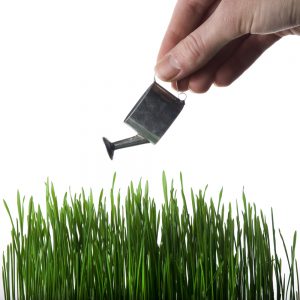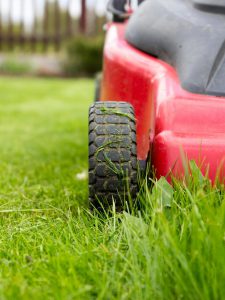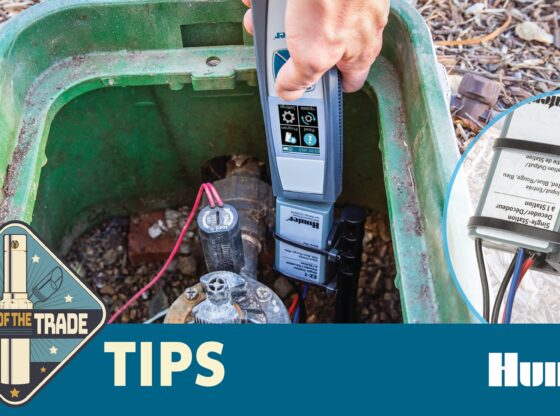Water is a key proponent in healthy grass. Without water, lawns can become stressed and weak. Finding the balance between watering and over watering can be meticulous. Not only is watering important, but conserving water (and money) is as well. Many factors, such as evaporation and head placement, should be evaluated to create a more efficient and effective system. And, now is the time to make plans for spring setup.
Water Conservation Tips
 Watering should be done at an appropriate level. Depending on weather condition, type of grass, and lawn health, each lawn has different needs. Plants will likely need more water in the hot summer months of the season than Spring and Autumn, for example.
Watering should be done at an appropriate level. Depending on weather condition, type of grass, and lawn health, each lawn has different needs. Plants will likely need more water in the hot summer months of the season than Spring and Autumn, for example.
There are new automated systems to help homeowners better regulate their irrigation systems, and paired with conservation efforts this process can be much easier. Here are several tips for conserving water.
1. Water Deeply
When you water deeply, the water will absorb well into the soil and preserve for nursing grass. Just giving the lawn a light watering, the water on the surface will evaporate quickly. The key to water properly is very simple: water in the early morning with the right amount and in right period of time.
One might wonder why watering deeply is on this list. Deep watering builds stronger roots in the lawn, as they must dig deeper to get what they need. Not only is this better for water conservation as less water evaporates, it is also better for grass as it becomes more firmly rooted to the soil.
2. Mulch
There are several types of mulching such as grass clippings or compost, and you can use each of them to conserve water in a lawn. A simple method to conserve water is mulching. Mulch is normally considered as a natural fertilizer for a lawn. Besides that, you can use it as a light blanket to cover the surface of the soil, make the evaporation slow down, and keep the moisture in the soil at a moderate level. Just be sure not to pile the mulch too high or it can smother and cause rot.
3. Mow at a Healthy Height
 Mowing on a regular basis is good for the lawn. Although, watch out for how high you cut the lawn. Cutting grass at the proper height encourages its root system to grow deeper to reach the nutrients and water in the soil. On the other hand, if you cut the grass too short, the surface of the soil will be exposed to the sunlight, and the evaporation will happen quickly.
Mowing on a regular basis is good for the lawn. Although, watch out for how high you cut the lawn. Cutting grass at the proper height encourages its root system to grow deeper to reach the nutrients and water in the soil. On the other hand, if you cut the grass too short, the surface of the soil will be exposed to the sunlight, and the evaporation will happen quickly.
If unsure, looking for information on ideal heights for the time of year, location, and weather will help conserve water. Cutting grass short before the winter and longer in the warm months will help keep it healthy year round. The taller grass in the summer gives soil shade, keeps it cooler and avoids direct sunlight. Also, keep in mind the proper mowing height of each type of grass may be different.
4. Irrigation
Having a good irrigation design will supply water slowly at the targeted points. Therefore, you can water at the positions you want. Drip irrigation system can help save from 30% to 70% of the water, compared with a sprinkler system. Moreover, this system can help save fertilizer, too. Consider installing a drip irrigation system since it will help save time, effort, and cost, besides watering the lawn. The advantage of this system is that it can reduce waste, thus saving money.
5. Keep in Mind Rainy Days
Don’t forget that rain is also a water source. Schedule irrigation system while keeping weather in mind. Some systems can automatically adjust the schedule, but it is good to check to ensure over watering is not occurring. Not only could watering when it’s rainy be wasting water but also drowning the lawn.
By keeping in mind these water conservation tips you can better appease your customers and the turf.












Thanks for your post. What about watering in different seasons ? Should I have to water every season in the same way?